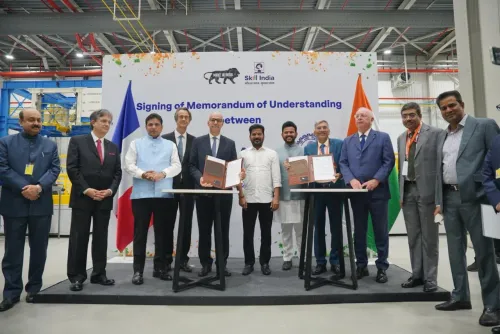How Did ITR Filers Increase by 32% in 5 Years?

Synopsis
Key Takeaways
- ITR filers have increased by 32% in five years.
- 6.48 crore to 8.56 crore taxpayers from FY 2019-20 to FY 2024-25.
- Government initiatives have expanded the tax base.
- Policy reforms and digitization are crucial for compliance.
- Transparency in tax filing has improved significantly.
New Delhi, Aug 19 (NationPress) The number of individuals submitting their income tax returns (ITR) in India has surged by more than 32 percent over the last five fiscal years, as revealed to Parliament on Tuesday. In the fiscal year 2019-20, 6.48 crore individuals filed ITRs, which increased to 8.56 crore in FY 2024-25, according to Minister of State for Finance Pankaj Chaudhary in a written response to a question in the Rajya Sabha.
This represents an increase of over 2 crore taxpayers, showcasing a consistent rise in tax compliance and an expansion of the tax base, as per the data provided by the Finance Ministry.
The Minister emphasized that the government has implemented several policy initiatives over the past two decades to encourage more citizens to enter the tax framework.
These initiatives include broadening the scope of TDS and TCS to encompass transactions such as foreign remittances, luxury vehicle purchases, e-commerce sales, and real estate transactions.
The introduction of the new Form 26AS and the Annual Information Statement (AIS) has also heightened taxpayer awareness regarding their financial activities, prompting them towards precise reporting.
Additionally, the government has streamlined the filing process by introducing pre-filled ITR forms and permitting taxpayers to submit updated returns within four years from the relevant assessment year.
The e-Verification Scheme, launched in 2021, identifies discrepancies between third-party data and ITR submissions, encouraging voluntary compliance prior to scrutiny.
Policy reforms have also encompassed structural changes, including decreased corporate tax rates, simplified personal income tax brackets, and the enactment of robust legislation like the Black Money Act (2015) and the revised Benami Transactions Prohibition Act (2016).
Officials assert that these measures have enhanced transparency and bolstered compliance.
Although data on the percentage of the population filing returns two decades ago is unavailable due to paper-based submissions, the Ministry highlighted that reforms implemented since then have significantly broadened India’s tax base.
However, the government clarified that no specific sectors or demographics with low compliance have been identified.
Officials believe that the rise in ITR filers indicates that policy reforms, combined with digitization and enforcement, are gradually steering India towards a wider and more transparent tax base.









